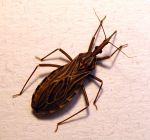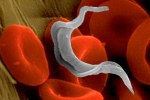Thomas More’s Utopians assumed that people without a belief in a deity could not possibly have moral values because their ethics stem from religion. Utopians contend that a person cannot be virtuous without a belief in an afterlife or a god because rewards and an eternal life depend on how a person lives in his or her mortal life. Conversely, Aipotutian society recognizes that highly religious societies are more war-like, subjugate women and reduce personal freedom by dictating what people should think and how they should live their lives. Aipotu sees religion as the root cause of many of its societal problems. Aipotu wants to increase public awareness of science and philosophy in the hope that people will discover that faith is not necessary for leading a productive and ethically good life. In order to achieve these goals, Aipotu needs to adopt a secularist agenda that stems the influence of religion in its society. The way to reduce the influence of religion in Aipotu is to limit religious institutions’ power by gradually dismantling them through public policy.
Since the last major war, Aipotu has witnessed an inverse relationship in the decline of the knowledge and acceptance of science and an increase in religion. Aipotutians increasingly put their lives at the mercy of their faith. They give alternative medicine, astrologers, psychics and religious leaders more credence than scientists and medical doctors. A reduction in the number of scientists and the amount of funding for research is a result of the publics’ distrust of science. The fact that it is financially more lucrative (and intellectually easier) to be a TV evangelist or a quack peddling the latest woo-woo on popular TV shows than becoming a researcher working on a cure for a prevalent disease like cancer or Aids is indicative of how little Aipotutian society values science and reason. The process of increasing Aipotutian’s acceptance of science and reducing their dependency upon religion must begin in childhood, since this is where people learn beliefs. Therefore, the first step is to banish religious indoctrination of children in the schools.
Although Aipotutian society has no established state religion, the process of religious indoctrination has become increasingly covert. There is a hidden agenda among some educators to teach intelligent design. Intelligent design assumes that because life is so complex, there had to be a designer. Many in the scientific community claim that intelligent design is creationism in disguise. This theory without evidence has found its way into some science textbooks. This method, dubbed the “wedge strategy,” refers to how organizations purporting to promote science push their doctrines into scientific texts. Publishers of biology textbooks omit the theory of evolution to avoid controversy with religious organizations that have a very powerful voice because they represent a growing number of Aipotutian believers. The Aipotutian scientific community blames the omission of evolutionary theory from text books on the country’s appalling lack of understanding of the sciences compared with other nations. Fifty percent of the Aipotutian population believe that the world was created in seven days. According to Aipotutian scientists, evolutionary theory forms the basis of educational curriculum because it is fundamental to understanding the biological sciences and provides the evidence that evolution eliminates the need for a creator. Awareness of the conflict between science and religion can only take place by allowing discussion in school classrooms. This will encourage the development of a healthy skepticism among young minds. A more skeptical mind is more likely to demand explanations for “religious phenomena” and to reject pseudo-science. However, the government recognizes the important of teaching non-denominational religious studies for gaining an understanding of religion’s historical and literary significance rather than for spiritual guidance.
The teaching of religion is important to maintain an understanding of how people evolve culturally because it provides an insight into how peoples’ attitudes change over time. It is only through the promotion of science and a critical analysis of religion and philosophy that clarifies why the foundation of thought should not rely on faith. Therefore, it is now necessary to ban private faith-based schools in Aipotu.
Aipotu will purchase private religious schools and turn them into public schools. Teachers previously employed by these schools have the opportunity to continue their teaching careers. The state will rehire these teachers once they become certified by the state to teach in public schools. There is no need to waste human resources. A mandate by the state will forbid the teaching of religious instruction for the purpose of spiritual guidance. Any infringement of this mandate is a case for dismissal from the school. The offending teacher is struck off the state certification register in much the same way a doctor is for gross medical misconduct. It is important for the Aipotutian government to send a clear message that it has zero tolerance for the religious indoctrination of children. The next problem that the Aitoputitian government has is dealing with families that impose their faith on their children.
The Aipotutian government needs to adopt a firm stance against religious customs, teachings and practices imposed upon children. Aipotutian society considers the religious indoctrination of children by parents tantamount to child abuse. Ancient customs, such as baptism, confirmation and arranged marriages at birth, fall into part of the indoctrination process when imposed upon children. More barbaric customs that involve any kind of bodily mutilation, such as, female genital mutilation, male circumcision (for reasons other than medical), self-flagellation, exorcism rituals, body piercing and tattooing, are punishable by imprisonment of the parents and subsequent removal of the child from its current environment. These types of practices are considered cruel and detrimental to healthy cognitive development because of the physical pain and mental trauma inflicted upon children. The reason is that a child does not have the cognitive development to consent to these practices. Children have a right to a healthy cognitive development and an education that helps them to think freely. The Aipotutian government needs to send the message that children are not chattels. Barbaric religious practices, along with their doctrines, affect not just one country, town or village, but marginalize millions of men, women and children around the world. However, Aipotu is also concerned about not infringing upon personal freedom, despite its long-term agenda in eradicating the imposition of religious doctrine upon others.
It is imperative to maintain adult individual freedom in Aipotu by not passing legislation that would undermine citizens’ freedoms. There should be no punishment for adults practicing their faith or the bizarre traditions that come with them. If a person makes claims of conversing with some deity or the dead, then their mental health should certainly be called into question. Visual or audible hallucinations are symptoms of mental illness should be treated as such. As in the case of other mental illnesses or delusional concepts, family or individual counseling will have access to mental health services if they want help. It is the hope of Aipotutian society that religious practices will die out with each generation, so there is no need for overly draconian measures for adults. However, Aipotu views conflicts between religious ideologies as a major cause of wars and terrorist activity that eventually lead to the breakdown in the infrastructures of society. The destruction of infrastructures destabilizes whole regions and prolongs conflicts and human suffering. Aipotu can prevent these human catastrophes in their country by dismantling its religious institutions.
Aipotu needs to seize all religious and sect organizations, and then redistribute the finances between non-governmental agencies and find other functions for the remaining buildings. People previously employed by religious organizations are encouraged to work for non-governmental agencies or other non-church related organizations that work for the common good of society. The religious buildings used by these institutions should become historical artifacts, since they are significant from an anthropological perspective. Churches, cathedrals, synagogues, mosques and temples are not destroyed, but become state properties and are valued for their aesthetic and historical appeal. Some of these beautiful buildings have wonderful acoustics and will become prestigious concert halls. Other buildings will become parts of more sophisticated culture, such as art galleries, theaters or opera houses, and their religious significance will eventually become a thing of the past.
One day, Aipotutians will view religious thought and rituals as archaic as those buildings. Future generations will view religious practices as bizarre and often inhumane. They will read with dismay about long gone societies that forbade the use of birth control and the termination of unwanted pregnancies, even in the case of rape. They will read with dismay when they learn how women in some societies were forbidden to show their face or expose any part of their body in public and were cruelly punished for doing so. They will read with dismay about the horrifying day when religious fanatics who believed in the promise of an eternal life as a reward for murdering thousands of people by flying two planes containing hundreds of people into buildings containing thousands of people. They will read with dismay how children were taught in those religious relics how an eternal life of damnation would await them upon death for misbehaving. Adults will find it ironic how the faithful viewed sex only for the purpose of procreation. Adults will be amused by the irony of poverty, pollution and overcrowding caused by overpopulation while the poor were told that abortion and the use of contraception was a sin. Most of all, future generations will find it astonishing when they learn how their ancestors believed in almost anything they were told without question. And they will wonder why and how 7th century belief systems existed in a sophisticated 21st century scientific and technological society?
Will Aipotu become a “utopia” if any of these changes ever come to pass?
 Polio: An American Story by David M. Oshinsky
Polio: An American Story by David M. Oshinsky












The way from Utopia to Aipotu? A Proposal
Posted in Atheism, Politics, Religion, Science with tags Atheism, essays, parody, Religion, Science, Secular Humanism, Secularism, Skepticism, social commentary, Thomas More, Utopia on January 4, 2011 by neandergalThomas More’s Utopians assumed that people without a belief in a deity could not possibly have moral values because their ethics stem from religion. Utopians contend that a person cannot be virtuous without a belief in an afterlife or a god because rewards and an eternal life depend on how a person lives in his or her mortal life. Conversely, Aipotutian society recognizes that highly religious societies are more war-like, subjugate women and reduce personal freedom by dictating what people should think and how they should live their lives. Aipotu sees religion as the root cause of many of its societal problems. Aipotu wants to increase public awareness of science and philosophy in the hope that people will discover that faith is not necessary for leading a productive and ethically good life. In order to achieve these goals, Aipotu needs to adopt a secularist agenda that stems the influence of religion in its society. The way to reduce the influence of religion in Aipotu is to limit religious institutions’ power by gradually dismantling them through public policy.
Since the last major war, Aipotu has witnessed an inverse relationship in the decline of the knowledge and acceptance of science and an increase in religion. Aipotutians increasingly put their lives at the mercy of their faith. They give alternative medicine, astrologers, psychics and religious leaders more credence than scientists and medical doctors. A reduction in the number of scientists and the amount of funding for research is a result of the publics’ distrust of science. The fact that it is financially more lucrative (and intellectually easier) to be a TV evangelist or a quack peddling the latest woo-woo on popular TV shows than becoming a researcher working on a cure for a prevalent disease like cancer or Aids is indicative of how little Aipotutian society values science and reason. The process of increasing Aipotutian’s acceptance of science and reducing their dependency upon religion must begin in childhood, since this is where people learn beliefs. Therefore, the first step is to banish religious indoctrination of children in the schools.
Although Aipotutian society has no established state religion, the process of religious indoctrination has become increasingly covert. There is a hidden agenda among some educators to teach intelligent design. Intelligent design assumes that because life is so complex, there had to be a designer. Many in the scientific community claim that intelligent design is creationism in disguise. This theory without evidence has found its way into some science textbooks. This method, dubbed the “wedge strategy,” refers to how organizations purporting to promote science push their doctrines into scientific texts. Publishers of biology textbooks omit the theory of evolution to avoid controversy with religious organizations that have a very powerful voice because they represent a growing number of Aipotutian believers. The Aipotutian scientific community blames the omission of evolutionary theory from text books on the country’s appalling lack of understanding of the sciences compared with other nations. Fifty percent of the Aipotutian population believe that the world was created in seven days. According to Aipotutian scientists, evolutionary theory forms the basis of educational curriculum because it is fundamental to understanding the biological sciences and provides the evidence that evolution eliminates the need for a creator. Awareness of the conflict between science and religion can only take place by allowing discussion in school classrooms. This will encourage the development of a healthy skepticism among young minds. A more skeptical mind is more likely to demand explanations for “religious phenomena” and to reject pseudo-science. However, the government recognizes the important of teaching non-denominational religious studies for gaining an understanding of religion’s historical and literary significance rather than for spiritual guidance.
The teaching of religion is important to maintain an understanding of how people evolve culturally because it provides an insight into how peoples’ attitudes change over time. It is only through the promotion of science and a critical analysis of religion and philosophy that clarifies why the foundation of thought should not rely on faith. Therefore, it is now necessary to ban private faith-based schools in Aipotu.
Aipotu will purchase private religious schools and turn them into public schools. Teachers previously employed by these schools have the opportunity to continue their teaching careers. The state will rehire these teachers once they become certified by the state to teach in public schools. There is no need to waste human resources. A mandate by the state will forbid the teaching of religious instruction for the purpose of spiritual guidance. Any infringement of this mandate is a case for dismissal from the school. The offending teacher is struck off the state certification register in much the same way a doctor is for gross medical misconduct. It is important for the Aipotutian government to send a clear message that it has zero tolerance for the religious indoctrination of children. The next problem that the Aitoputitian government has is dealing with families that impose their faith on their children.
The Aipotutian government needs to adopt a firm stance against religious customs, teachings and practices imposed upon children. Aipotutian society considers the religious indoctrination of children by parents tantamount to child abuse. Ancient customs, such as baptism, confirmation and arranged marriages at birth, fall into part of the indoctrination process when imposed upon children. More barbaric customs that involve any kind of bodily mutilation, such as, female genital mutilation, male circumcision (for reasons other than medical), self-flagellation, exorcism rituals, body piercing and tattooing, are punishable by imprisonment of the parents and subsequent removal of the child from its current environment. These types of practices are considered cruel and detrimental to healthy cognitive development because of the physical pain and mental trauma inflicted upon children. The reason is that a child does not have the cognitive development to consent to these practices. Children have a right to a healthy cognitive development and an education that helps them to think freely. The Aipotutian government needs to send the message that children are not chattels. Barbaric religious practices, along with their doctrines, affect not just one country, town or village, but marginalize millions of men, women and children around the world. However, Aipotu is also concerned about not infringing upon personal freedom, despite its long-term agenda in eradicating the imposition of religious doctrine upon others.
It is imperative to maintain adult individual freedom in Aipotu by not passing legislation that would undermine citizens’ freedoms. There should be no punishment for adults practicing their faith or the bizarre traditions that come with them. If a person makes claims of conversing with some deity or the dead, then their mental health should certainly be called into question. Visual or audible hallucinations are symptoms of mental illness should be treated as such. As in the case of other mental illnesses or delusional concepts, family or individual counseling will have access to mental health services if they want help. It is the hope of Aipotutian society that religious practices will die out with each generation, so there is no need for overly draconian measures for adults. However, Aipotu views conflicts between religious ideologies as a major cause of wars and terrorist activity that eventually lead to the breakdown in the infrastructures of society. The destruction of infrastructures destabilizes whole regions and prolongs conflicts and human suffering. Aipotu can prevent these human catastrophes in their country by dismantling its religious institutions.
Aipotu needs to seize all religious and sect organizations, and then redistribute the finances between non-governmental agencies and find other functions for the remaining buildings. People previously employed by religious organizations are encouraged to work for non-governmental agencies or other non-church related organizations that work for the common good of society. The religious buildings used by these institutions should become historical artifacts, since they are significant from an anthropological perspective. Churches, cathedrals, synagogues, mosques and temples are not destroyed, but become state properties and are valued for their aesthetic and historical appeal. Some of these beautiful buildings have wonderful acoustics and will become prestigious concert halls. Other buildings will become parts of more sophisticated culture, such as art galleries, theaters or opera houses, and their religious significance will eventually become a thing of the past.
One day, Aipotutians will view religious thought and rituals as archaic as those buildings. Future generations will view religious practices as bizarre and often inhumane. They will read with dismay about long gone societies that forbade the use of birth control and the termination of unwanted pregnancies, even in the case of rape. They will read with dismay when they learn how women in some societies were forbidden to show their face or expose any part of their body in public and were cruelly punished for doing so. They will read with dismay about the horrifying day when religious fanatics who believed in the promise of an eternal life as a reward for murdering thousands of people by flying two planes containing hundreds of people into buildings containing thousands of people. They will read with dismay how children were taught in those religious relics how an eternal life of damnation would await them upon death for misbehaving. Adults will find it ironic how the faithful viewed sex only for the purpose of procreation. Adults will be amused by the irony of poverty, pollution and overcrowding caused by overpopulation while the poor were told that abortion and the use of contraception was a sin. Most of all, future generations will find it astonishing when they learn how their ancestors believed in almost anything they were told without question. And they will wonder why and how 7th century belief systems existed in a sophisticated 21st century scientific and technological society?
Will Aipotu become a “utopia” if any of these changes ever come to pass?
Leave a comment »